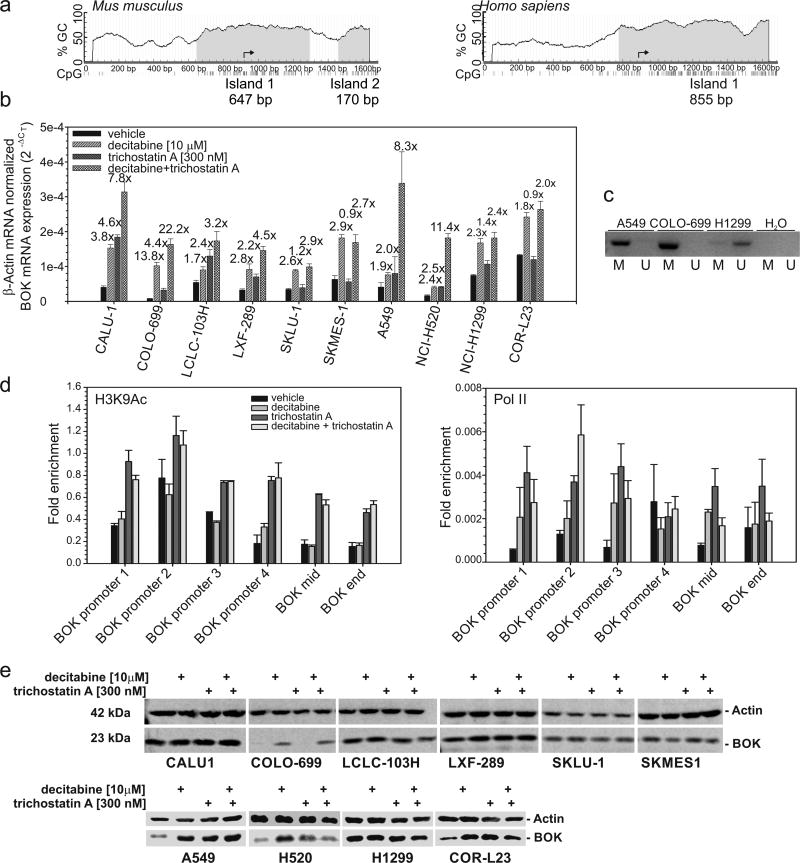Figure 3.
The BOK gene is epigenetically silenced in NSCLC cell lines. (a) Bioinformatic analysis of human BOK gene methylation. CpG island prediction was based on DNA regions > 100bp with a CG content > 0.5 and observed/expected CpG ratio above 0.6. An input sequence of 1600-base long DNA around the BOK transcriptional start (arrow) was searched. (b) Cells were treated as indicated with 10 µM of decitabine for 72h or 300 nM of trichostatin A for 24 h or a combination of both; mRNA expression was measured by RT-qPCR. Data represent mean ± S.E.M from 3 experiments. Fold change between control and treatment is indicated above the bar. (c) Methylation status of BOK promoter by methylation specific PCR in A549, COLO-699 and H1299 cells using primers for methylated (M) or unmethylated (U) bisulfite-modified DNA. Representative example from 3 independent experiments is shown. (d) Acetylated H3K9 active chromatin mark and RNA polymerase II binding throughout the BOK gene in A549 cells. A549 cells treated with decitabine (72h) and/or trichostatin A (24h) were analyzed by ChIP with anti-H3K9Ac, anti-Pol II and IgG, followed by qPCR analysis of amplicons in the promoter and in the body of the BOK gene (internal control). Error bars indicate the standard error of the mean (SEM) of two biological replicates. (e) NSCLC cells were treated as indicated in (b) and total protein lysates analyzed by western blotting.

